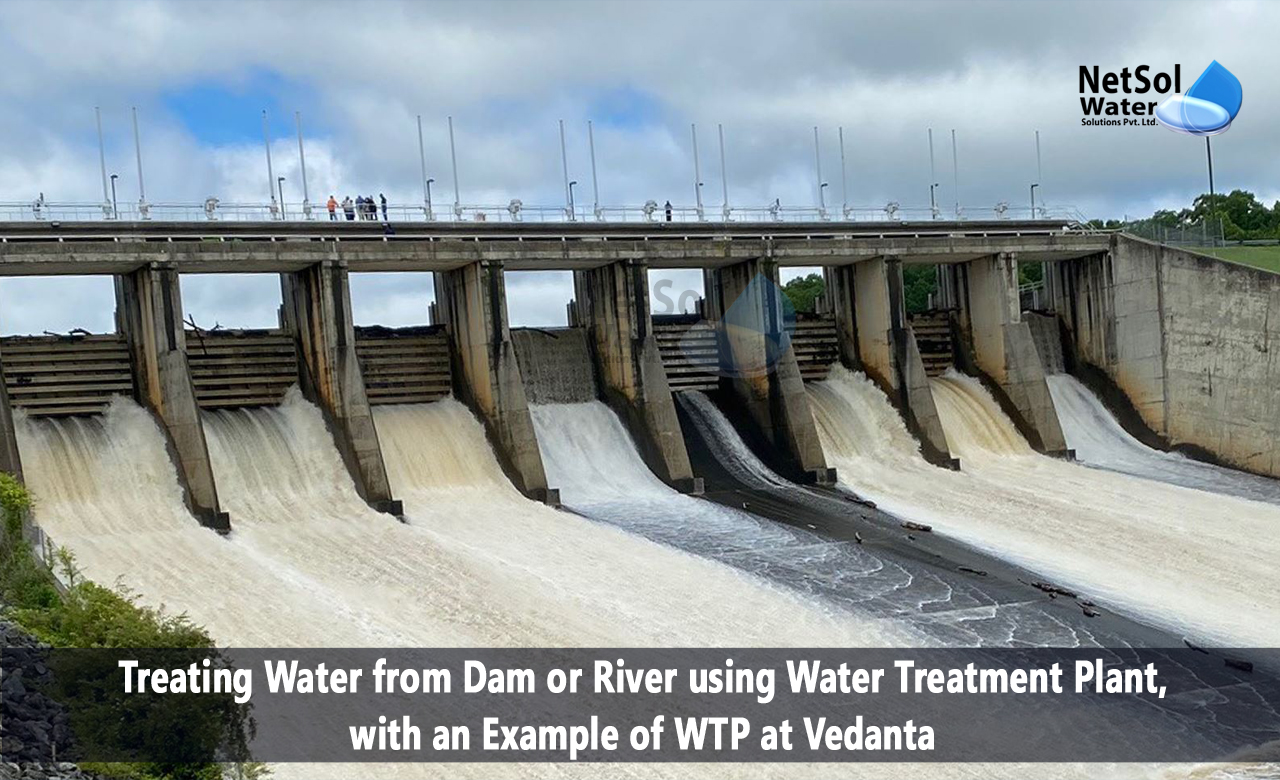How to treat water from Dam or River using Water Treatment Plant?
As the population of cities and towns grows, the demand for clean water increases. However, this demand often exceeds the available supply of freshwater resources, leading to the use of alternative sources such as dams and rivers. Water treatment plants (WTP) play a crucial role in treating this water and making it safe for consumption.
Now we will discuss the process of treating dam and river water using WTPs, also using the example of Vedanta WTP.
Treatment:
The treatment of Dam water or River water involves several stages to remove impurities and contaminants. The process typically involves physical, chemical, and biological treatments. The following are the stages involved in treating DAM water or River water for city/town/society:
· Screening:
The first stage of the water treatment process involves screening the water to remove large debris and particles. This is done using a screen or a grit chamber. The purpose of this stage is to prevent damage to equipment and pipes downstream.
· Coagulation and Flocculation:
The second stage of the process involves adding coagulants such as aluminum sulfate or ferric chloride to the water. These chemicals neutralize the charge on the particles, making them easier to remove. This process is called coagulation. After coagulation, a flocculant such as polyacrylamide is added to the water to help the particles stick together and form larger clumps, called flocs. This process is called flocculation.
· Sedimentation:
The third stage of the process involves allowing the flocs to settle to the bottom of a tank or basin, in a process called sedimentation. This removes the larger particles and impurities from the water.
· Filtration:
The fourth stage of the process involves filtering the water to remove smaller particles and impurities. This is done using sand or activated carbon filters. The water is then sent to a disinfection unit.
· Disinfection:
The final stage of the process involves disinfecting the water to kill any remaining bacteria, viruses, or other microorganisms. This is done using chlorine, ozone, or ultraviolet radiation.
The Vedanta Water Treatment Plant.
The Vedanta Water Treatment Plant (WTP) is a state-of-the-art facility located in Jharsuguda, Odisha. The plant is made to generate 4.8 MLD (4800 KLD) and is designed to treat water from the Hirakud dam, which is located approximately 70 km away. The WTP has been designed to meet the highest standards of water treatment and uses advanced technologies to achieve this. Figure 1 below shows this WTP.
Figure 1 WTP installed at Vendata Odisha by NetSol Water.
The Process Function of Vedanta WTP
The Vedanta WTP uses a six-stage process to treat the water from the Hirakud dam. The following is a detailed description of each stage:
1. Raw Water Storage.
The first stage of the process involves storing the raw water from the Hirakud dam in a raw water storage tank.
2. Pre-Treatment.
The second stage of the process involves pre-treatment of the raw water. This is done using a combination of coagulation, flocculation, and sedimentation. The purpose of this stage is to remove suspended particles and other impurities from the water.
3. Filtration.
The third stage of the process involves filtration of the pre-treated water. The water is passed through a sand filter and then an activated carbon filter to remove smaller particles and impurities.
4. Reverse Osmosis.
The fourth stage of the process involves reverse osmosis (RO). RO is a process that uses a semi-permeable membrane to remove dissolved solids, such as salts and minerals, from the water. The Vedanta WTP uses two RO units, each with a capacity of 10 MLD. The RO units are equipped with advanced features such as online monitoring, auto-backwash, and auto-cleaning to ensure efficient and reliable operation.
5. Ultrafiltration.
The fifth stage of the process involves ultrafiltration (UF). UF is a process that uses a membrane to remove bacteria, viruses, and other microorganisms from the water. The Vedanta WTP uses two UF units, each with a capacity of 10 MLD. The UF units are also equipped with advanced features such as online monitoring, auto-backwash, and auto-cleaning.
6. Disinfection.
The final stage of the process involves disinfection of the water. This is done using a combination of chlorine and ultraviolet (UV) radiation. The water is chlorinated to kill any remaining bacteria and viruses and then exposed to UV radiation to ensure complete disinfection. The treated water is then stored in a clear water tank before being distributed to consumers.
Conclusion.
Water treatment is a critical process for ensuring the availability of safe and clean drinking water. Treating dam and river water for cities, towns, and societies requires a multi-stage process that involves physical, chemical, and biological treatments. The Vedanta Water Treatment Plant (WTP) is an excellent example of a state-of-the-art facility that uses advanced technologies to achieve efficient and reliable water treatment. The six-stage process used by the Vedanta WTP involves pre-treatment, filtration, reverse osmosis, ultrafiltration, and disinfection. By following these guidelines and using advanced technologies, it is possible to ensure that the water supplied to cities and towns is safe, clean, and free of impurities.
Leading manufacturer of sewage treatment plants in India.
Netsol Water is the leading manufacturer, supplier, and exporter of a quality selection of water treatment, and wastewater treatment products in India, by using advanced sewage treatment methods.
RO plants, water softeners, ETPs, STPs, DM plants, AMC, O&M, Ultra filtration, UV, Ozonation, ZLD plants, Anoxic tanks, and other goods and services are available from us. We also provide services to businesses in sectors including automotive, pharmaceutical, textile, pulp & paper, beverages, refineries, schools, hospitals, office buildings, and hotels, among others.
Call us at +91 9650608473 or email at enquiry@netsolwater.com for further information.



